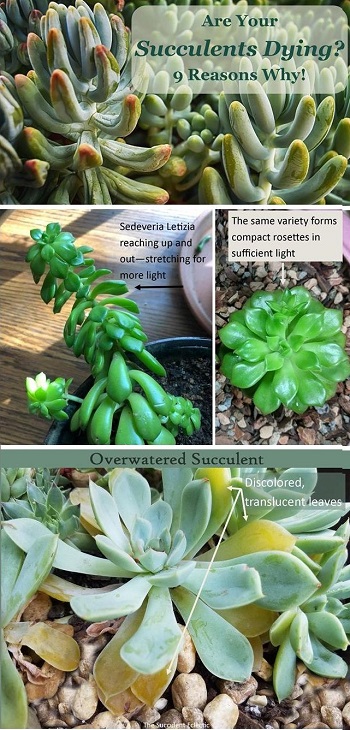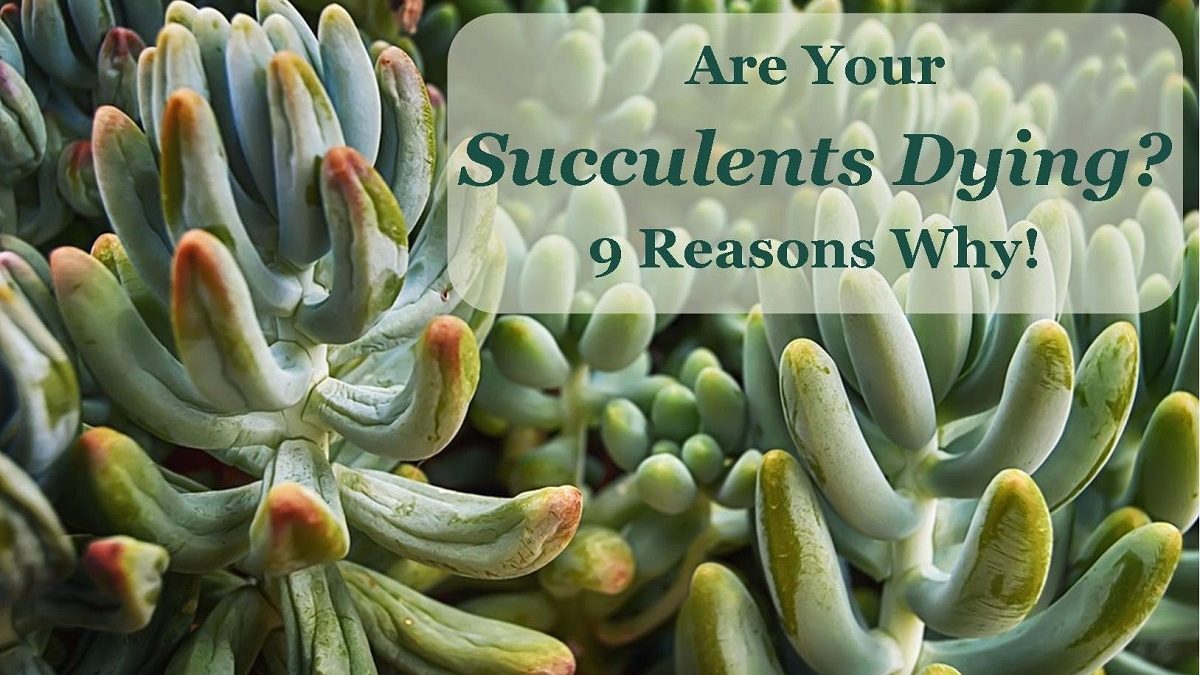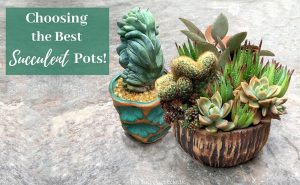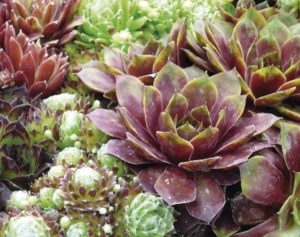We always hear how easy succulents are to grow. But yours keep dying! So what’s the deal? Succulents are unlike other garden plants. The care that leads to healthy, happy plants in your garden can and will kill a succulent. Like most plants, succulents are easy to grow when you understand their specific needs. When it comes to succulents, those needs are quite specific. When succulents die, there’s usually a pretty common cause for it. Your succulent care will improve when you understand what happens when it goes wrong. Let’s look at the 9 most common reasons for dying succulents.
9 Reasons Why Succulents Die
In this Post We'll Cover:
- 9 Reasons Why Succulents Die
- 9 Causes for Dying Succulents
- Over-watering Leads to Dying Succulents
- Succulents Do Need Water
- The Importance of Succulent Soil
- Succulents Need Drainage
- Your Pot is Too Big or Too Deep
- Succulents Need a Lot of Light
- Succulents Dying From too Much Sun
- Tender Succulents Dying Due to Frost & Freeze
- Unrealistic Succulent Selection is a Killer
{Please note, some links in this post may be affiliate links to sites that pay me a small commission if you click on the link and make a purchase. This commission is at absolutely no cost to you. I only recommend products and companies that I have worked with and truly love! ~Kat}
9 Causes for Dying Succulents
There are thousands of different varieties of succulents in a myriad of colors, shapes, sizes and textures. But when succulents die, there are typically just 9 causes:
- Over-watering
- Under-watering
- Using the wrong soil
- No drainage
- The pot is too large or too deep
- Insufficient light
- Too much sun
- Freezing
- Unrealistic plant choice
Read on to learn all about the most common causes for dying succulents. To jump straight to one you want, just click on the link in the list above. Cool!
Over-watering Leads to Dying Succulents
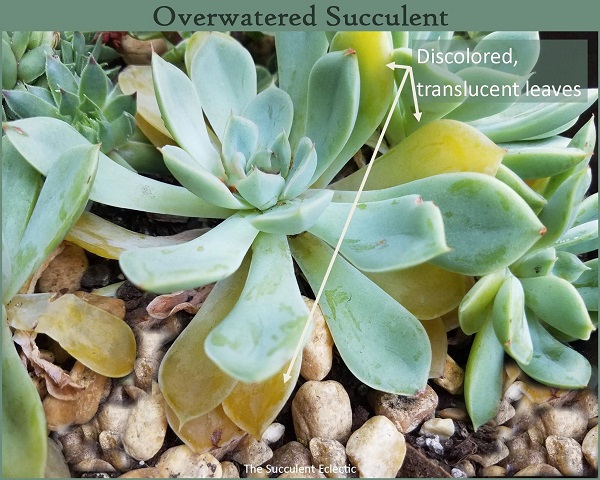
The most common cause of dying succulents is over-watering. Because succulents are native to unusually dry climates, they develop special water-storing cells within their leaves, roots or stems. This is what makes them “succulents”. When water is plentiful, the plant uses what it needs and stores excess water in these storage cells. As time passes and the succulent needs more water, the plant draws down on the stored water to use at need. It’s a remarkable adaptation to dry climates.
When there is a lot of water in the soil, the roots must take it up and supply the plant with it, or they will down. If the plant’s storage cells are already full, more water will make them burst, like over-filled water balloons. When the storage cells burst, the excess water fills the leaves. This makes the leaves look discolored and a bit translucent, like those in the image above. When the leaves look like this, they are dying or are already dead. Unless action is taken quickly, all the leaves will soon have burst cells and the roots will soon rot. Over-watering is the most common reason succulents die.
However, with prompt action, you can save an over-watered succulent! When only some of the leaves are damaged, like the image above, your succulent can be saved. Or, if you find a rain-soaked plant, you can rescue it from its water-logged soil. Just follow the instructions at the link above and get it into fresh succulent soil ASAP.
Succulents Do Need Water
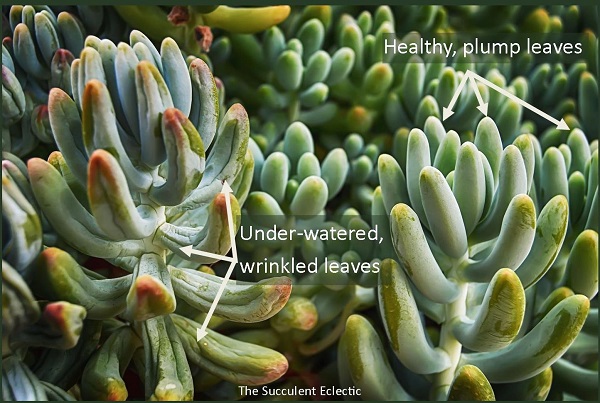
Sometimes, you’re so concerned about over-watering your succulents, that you take it too far the other way. In truth, while under-watering can lead to dying succulents, it is far less common than over-watering. But it does happen! The clearest sign that your succulents need more water is that their leaves become wrinkled, like in the image above. Remember the water-storage cells we discussed above? Just as the surface of a full water balloon is taught, if you release a lot of the water, it becomes smaller, right? In the same way, the water-storage cells become smaller as they empty, and the surface of the leaves wrinkle.
If you have a succulent with wrinkled leaves, give it a good, thorough drink. Click here to learn how to water succulents properly. Because over-watering succulents is so dangerous, you can use the development of wrinkled leaves to let you know when to water your succulent. If you’re new to succulents or are growing a variety that is especially sensitive to over-watering, this is a good technique to use as you learn to read the plant’s needs.
The Importance of Succulent Soil
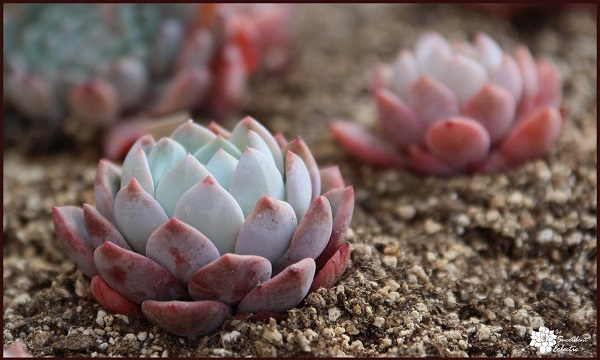
Fast-draining succulent soil is absolutely critical for healthy succulents. Succulents are native to rocky, sandy, nutritionally poor, fast-draining soil. When you plant them in regular potting soil, with its rich nutrients and ability to retain soil, you make it much harder for the succulent to be healthy. Dark, rich, humusy soil is not a treat for your plant — the soil holds a greater content of water with less air and succulent roots struggle to breathe. The wrong soil is a frequent cause of dying succulents because it so frequently leads to them being over-watered. It also makes it so much harder to learn the proper watering technique.
Good succulent soil does not have to be expensive. You can make your own, buy a good, pre-packaged succulent soil or add pumice to any soil to make it drain faster. Do your plants — and yourself! — a favor, and get succulent soil.
Succulents Need Drainage
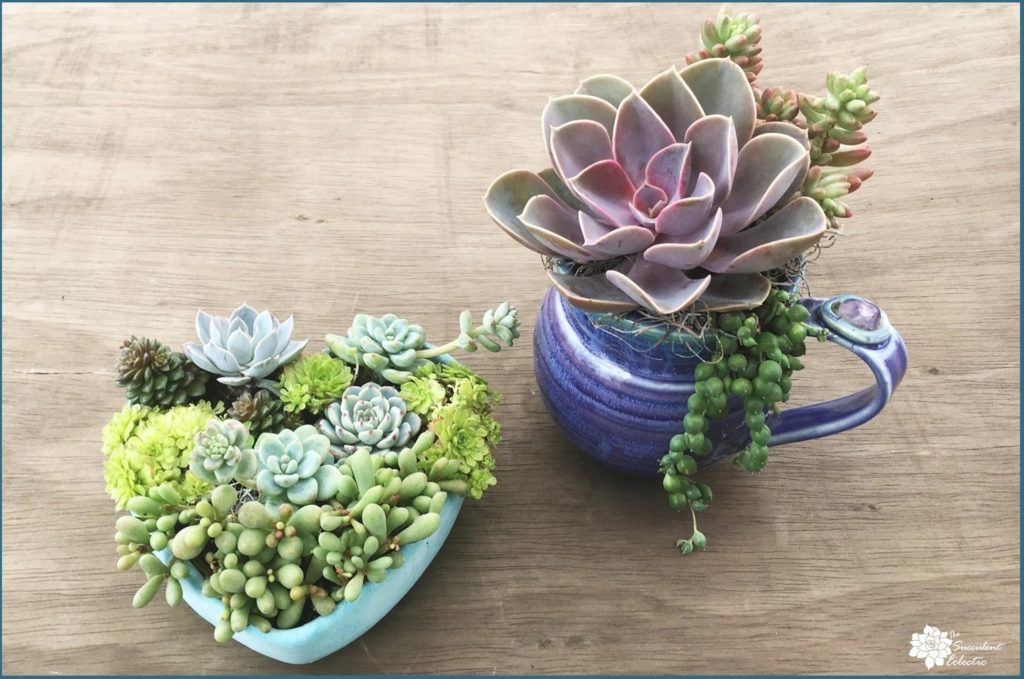
Succulents need great drainage. Drainage comes from holes at the bottom of the container that allows excess water to run through. It also allows a bit of air circulation for the roots. When you water your succulents, you should do so thoroughly, until the water runs from the drainage holes. Is it possible to grow succulents in a container without holes? Yes, it is. But it is much trickier and you’ve got to have excellent skills at reading your succulent’s condition. Even then, you are always risking a bigger problem. A single rain or extra watering may kill your plants if there’s no drainage. So what to do when you’ve found the cutest pot but it has no drain holes? Risk dying succulents? No! Drill your own drainage, of course!
Your Pot is Too Big or Too Deep
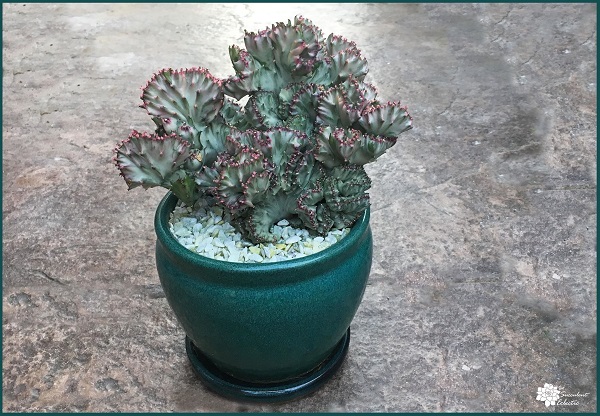
Are you surprised to learn that large pots will lead to succulents dying? Experienced gardeners know that healthy roots lead to healthy plants. Providing a large, deep pot is great for most plants, giving their roots room to spread out and down. But succulents typically have small, shallow roots, suited for capturing as much water as possible when it falls, but not extensive enough to use up the plant’s resources. A large pot, or one that is extra deep, holds a lot of soil the succulent’s roots will never reach. This soil holds more water than the plant is able to use. The water is not refreshed, and bacteria can build up in addition to excess water. This leads to root rot.
In general, a pot that is 4-inches deep is a good depth for growing succulents. A good-sized plant will do well with a pot 6-inches deep. If your pot is more than 6-inches deep, or a lot wider than the drip line of the plant, you’ll have trouble watering it well, without risking root rot.
Yes, for those counting, this is the fourth of 9 causes for succulents dying related to over-watering. It’s that big a deal. Read on for 4 more reasons that are unrelated to water!
Succulents Need a Lot of Light
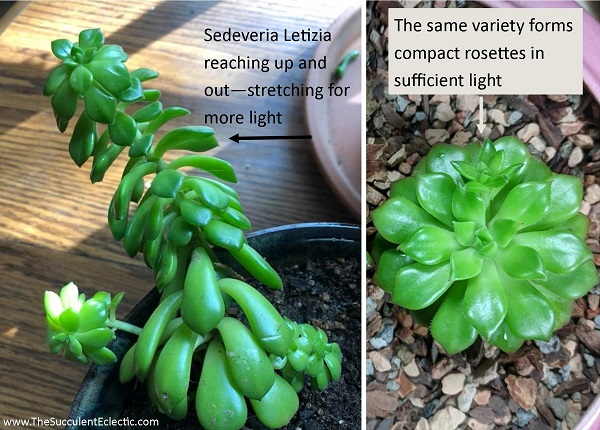
photo credit Emily Danielle Griffin and April Dailey
Sunlight is critical to the health and well-being of succulents. When succulents are starving for sunlight, they grow very tall, as they stretch to reach the light. This process is known as etiolation. Above, you see this demonstrated with Sedeveria Letizia. Grown in ample light, this plant is a nicely compact rosette. When succulents are grown in insufficient light, the results are not just unsightly — it is a common cause for dying succulents. When left untreated, an etiolatedA plant is etiolated (EE-tee-oh-late-ed) when it grows very ... succulent can become so stretched that its stem collapses, cutting off the flow of water within the plant. Learn to recognize the early signs of an etiolated succulent and how to reverse it.
Succulents Dying From too Much Sun
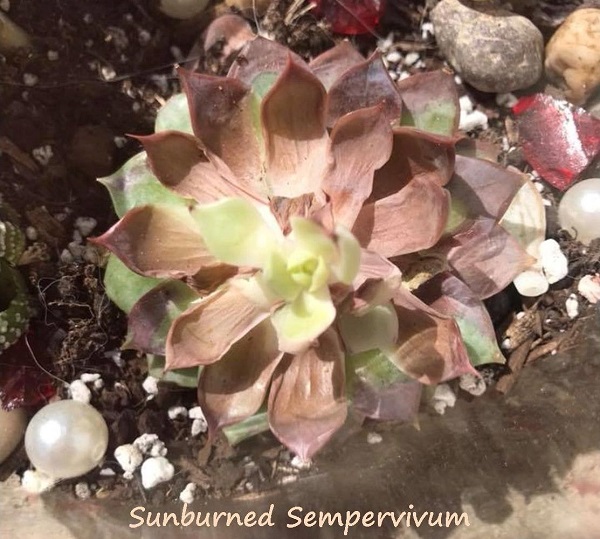
photo credit, Debbie Bray
Can too much sunshine lead to succulent dying? We tend to think succulents are desert plants, thriving in blazing sun all day long. In truth, many grow in the shade offered by bigger plants, rocks, in mixed habitats and even partially buried underground. While some succulents can tolerate full sun all day long, most want some amount of protection throughout the day. When succulents get more sun exposure than they can handle, they become sunburned. This damage is permanent. Badly sunburned leaves are no longer able to store water or to photosynthesize. With too many sunburned leaves, the plants die.
Too much sun exposure is a common cause of dying succulents. However, this is not always due to placing a low light succulent variety placed in too much sun. Often the issue is a matter of timing. The badly burned sempervivum above is a full sun succulent. But this plant was grown indoors for months before it was moved outdoors into too much sun. It was exposed to full sun too quickly before it had the chance to gradually adapt to the change. It is critical that you acclimate your succulents to full sunlight gradually. Succulents form colorful pigments in their leaves in response to the stress of sun exposure. This pigment protects the plant from damaging UV rays. Without the time to develop these protective pigments, the plant’s leaves burned.
When you move indoor succulents to grow outside, take care to introduce them to sun exposure gradually. Similarly, most nurseries grow their succulents in greenhouses. When you buy a plant online or at a nursery, take a gradual approach to moving it into full sunlight.
Tender Succulents Dying Due to Frost & Freeze
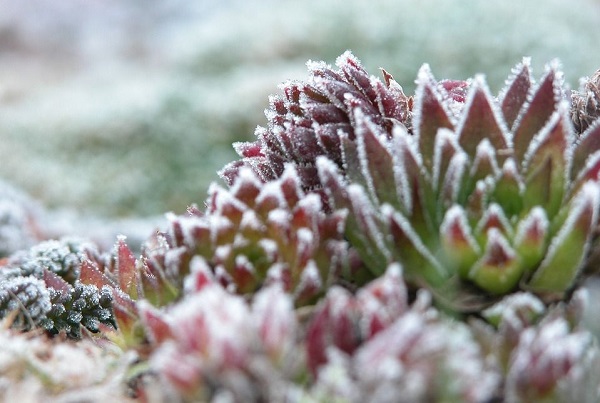
While some succulents are admirably winter-hardy, surviving and thriving in zones 3-5, the majority of succulents will die if they freeze. Some are badly damaged by a single hard frost. Take care to understand the needs of your plants before you subject them to temps below freezing. That being said, most cold-hardy succulents do best when they are left outdoors over the winter. Check out my list of the top 10 winter succulents.
Unrealistic Succulent Selection is a Killer
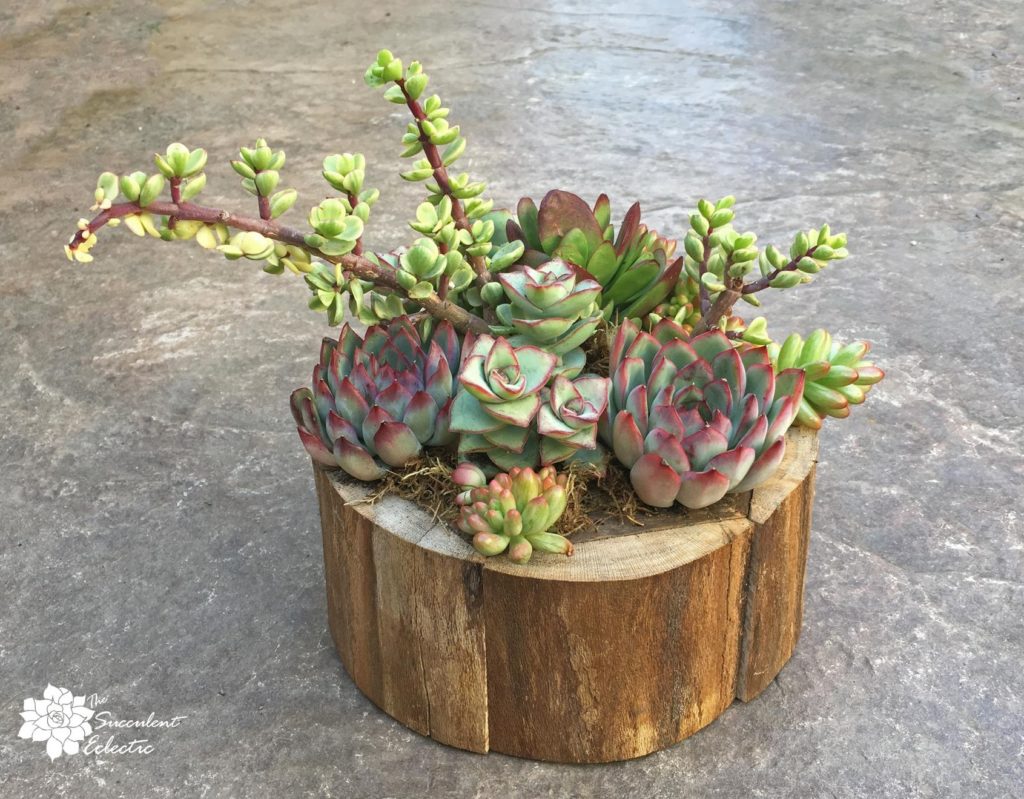
Some succulents, like agave and saguaro cactus, must have full, direct sun all day long. Others, like haworthia and sansevieria, need quite a bit of shade throughout the day and are happy to grow indoors. Some succulents are more tolerant of overwatering, and some, like lithops, are exceptionally sensitive. Some varieties of succulent — sempervivum and rosularia — are exceptionally cold hardy, thriving in zone 5 or colder. But others, like aeonium or senecio, will die with a hard frost. It is so important to choose your succulents for the growing conditions you can offer. Choosing unrealistic varieties is the 9th common cause of succulents dying.
So often, the reason your succulent is etiolated or over-watered is not because you can’t grow succulents. It’s because you chose the wrong succulent variety for the conditions. An indoor location where you cannot grow an echeveria without it growing overly tall and stretched may be perfect for an haworthia. If you keep killing a lithops, it’s likely because you don’t know that lithops have very special needs for watering. Keeping an echeveria outdoors over the winter in Chicago or trying to grow an agave in the shade — mistakes like these will keep killing your succulents.
There you have it — 9 causes for dying succulents. If it seems like there’s a Goldilocks complex here — succulents need enough water, but not too much, or give them lots of light, but not too much — that’s only because it’s true! 🙂 Understanding specific succulent varieties and their care needs is the primary reason to learn to identify succulents in the first place.
I hope this article helps you to correct the issues leading to your succulents dying. I have linked to a lot of posts that will look at succulent care like lighting and watering in greater depth. As always, please feel free to leave a comment to let me know what you think or to ask a question. I’m happy to help!
Because life is just better with succulents!
P.S. For more great succulent information, please subscribe to The Succulent Eclectic and you’ll get my FREE e-course 7 Steps to Succulent Success! Thanks!
P.P.S. Why not join my Facebook Group for succulent lovers? We talk about succulent care, propagation, succulent identification, and design. It’s a warm and welcoming group that would love to meet you!
P.P.S. Why not join my Facebook Group for succulent-lovers? We talk succulent care, propagation, identification and design. It’s a warm and welcoming group that would love to meet you!
